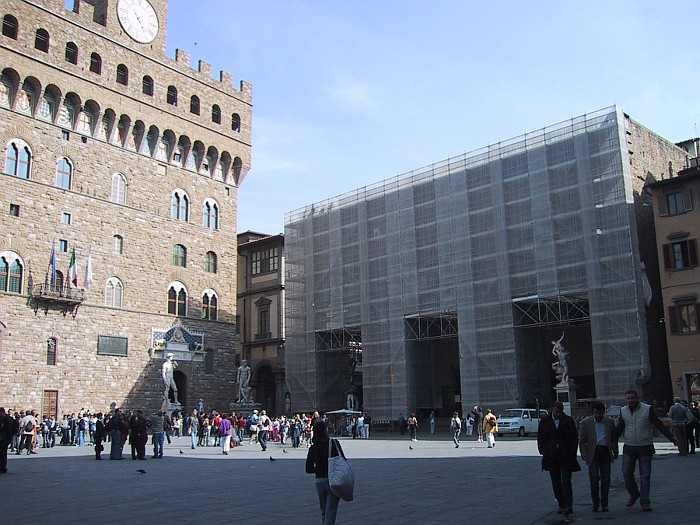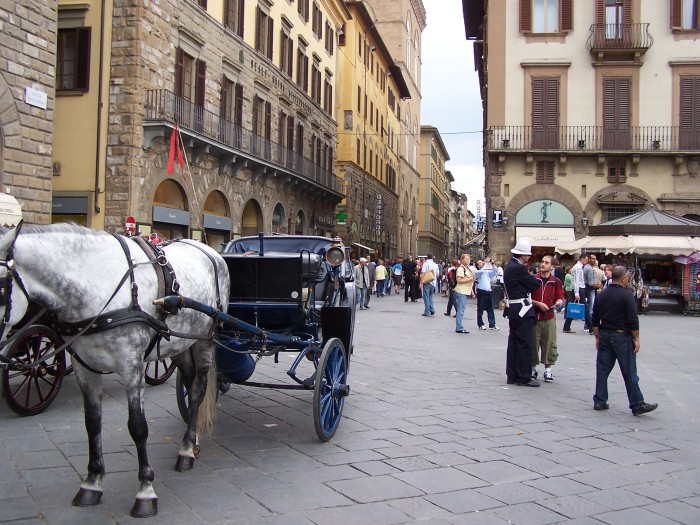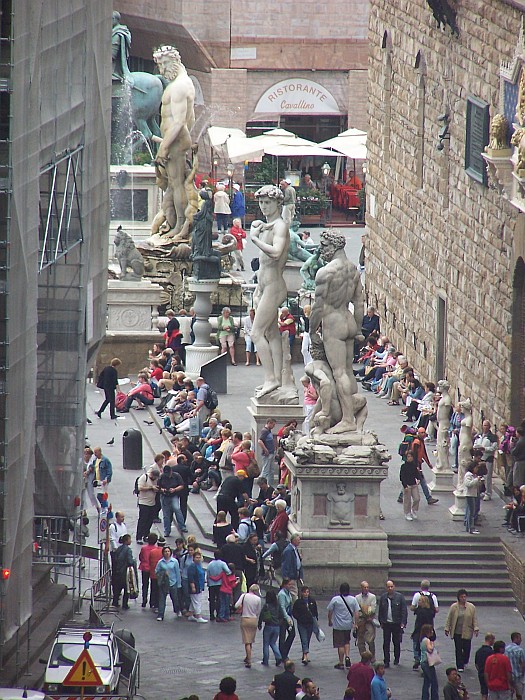(Italian pronunciation: pyah-tsah day-la see-nyoh-ree-yah)
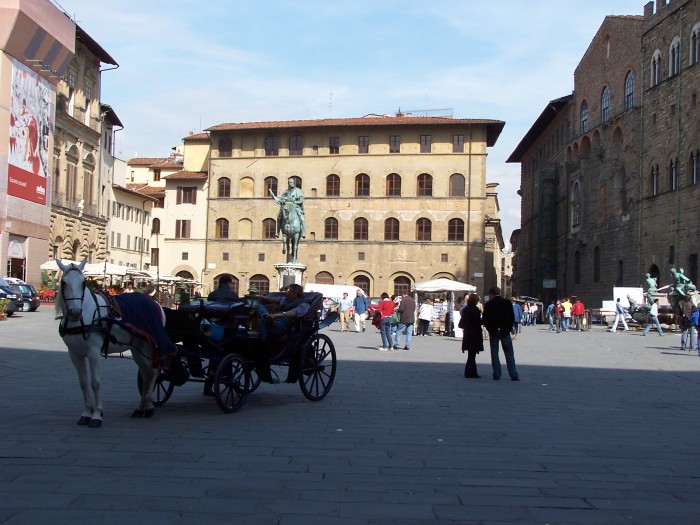

This piazza is a unique outdoor sculpture gallery and, along with the Palazzo Vecchio, has been at the heart of Florentine politics since the 14th century. Citizens gathered here when called to a parlamento (public meeting) by the Lalazzo's great bell. The statues, some now just copies, commemorate major events in the city's history. Many are linked to the rise and fall of the Florentine Republic. One of the most scenic squares in Italy, it was built and enlarged between the 13th and 14th centuries, thanks to the demolition of the palaces of the Uberti, Foraboschi and other families. The Palazzo Vecchio dominates the asymmetrical square, which also contains the Neptune Fountain (1563-1575) by Bartolomeo Ammannati, sometimes called il Bianconne by the Florentines, and the equestrian statue of Cosimo I (1594) by Giambologna. The square is surrounded by old palaces and the Loggia dei Lanzi, a Gothic structure built by Benci di Cione and Simone Talenti (1376-1382). There is also a marker showing where the religious leader Girolamo Savonarola was burned at the stake.
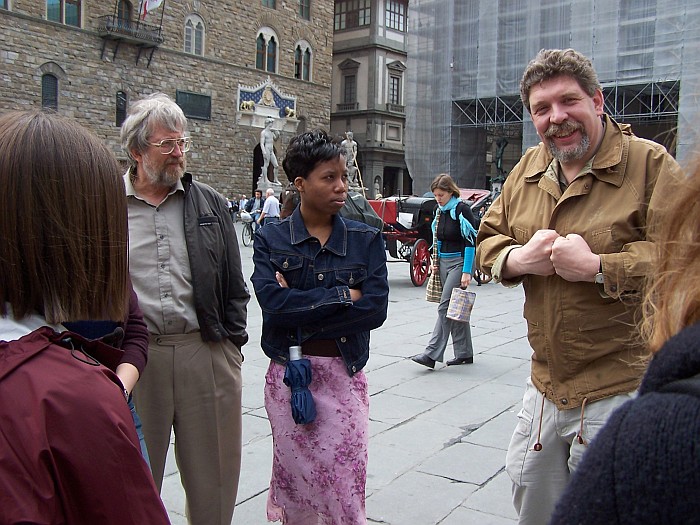
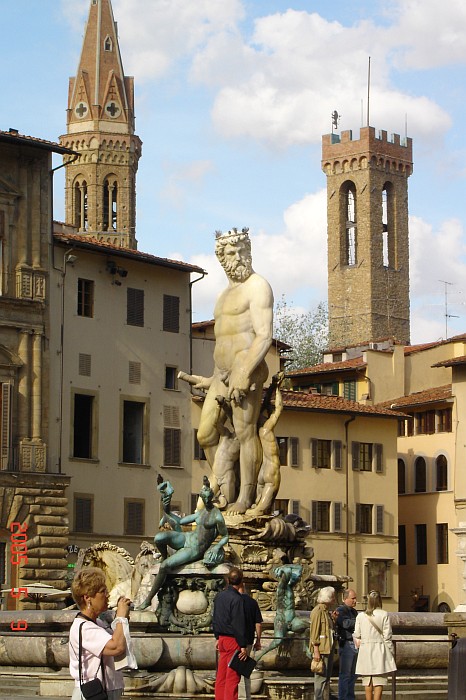
Ammannati's Neptune Fountain (1575) of the Roman sea god surrounded by water nymphs commemorates Tuscan naval victories. In the background one can see the steeple of the Badia and the Bargello's tower.

view a short movie clip showing the Savonarola Festival held in Piazza della Signoria
Savonarola Festival movie clip 2
